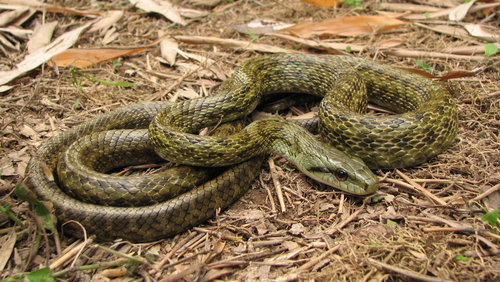
Japanese Rat Snake
The Japanese rat snake, Elaphe climacophora, captivates with its agile climbing and striking olive hue. Inhabiting Japan's varied landscapes, it plays a vital role in controlling rodent populations. Look closely, and you might spot this adept predator stealthily weaving through branches or camouflaged against lush foliage.
13.1 years
Lifespan
Brown, Yellow, Blue, Green
Color
Low
Aggression
Least Concern
Conservation Status
Stable
Population Trend
Characteristics
Elaphe climacophora, commonly known as the Japanese rat snake, is a non-venomous snake native to Japan. It thrives in diverse habitats, including forests, grasslands, and urban areas. Known for its climbing ability, it often preys on rodents and birds. The snake's distinctive olive or grayish-green coloration helps it blend into its environment.
Distribution Range of the Japanese Rat Snake
Elaphe climacophora, commonly known as the Japanese Rat Snake, is native to Japan. Its geographical distribution includes the Japanese islands of Honshu, Kyushu, and Shikoku, as well as some smaller surrounding islands. It is not found outside of Japan in the wild.
Japanese Rat Snake's Habitat
Environmental Conditions
Elaphe climacophora typically inhabits a range of environments including forests, grasslands, and areas near human settlements such as agricultural fields and gardens. The species thrives in temperate climates, characterized by moderate temperature variations and adequate rainfall throughout the year.
Ecological Niche
The Japanese Rat Snake is both terrestrial and arboreal, often found in trees but also spending time on the ground. It plays a role in controlling the populations of its prey, which include small mammals like rodents, birds, and occasionally eggs. The snake is well-adapted to both forested and open areas, demonstrating its ecological versatility.
Copyright @ Nature Style Limited. All Rights Reserved.
 English
English